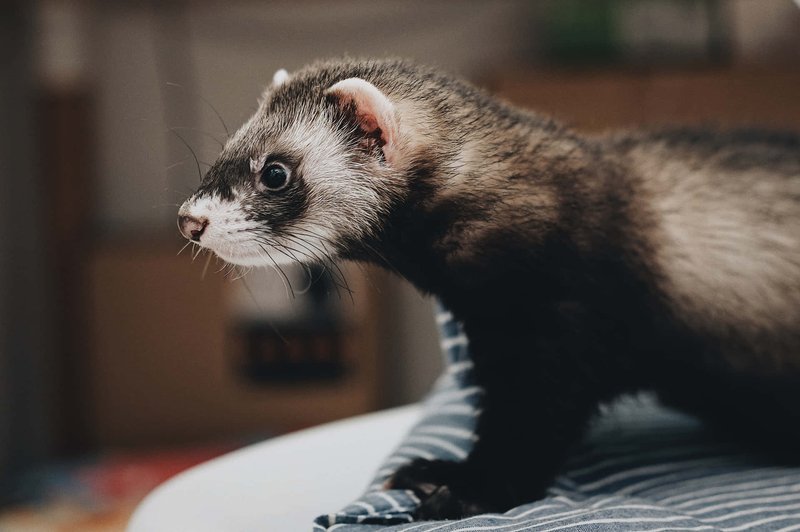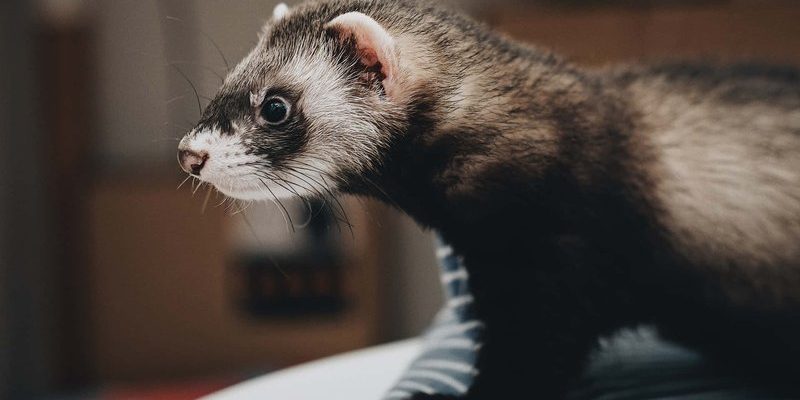
Here’s the thing: ferrets are naturally curious and incredibly agile. Their role in their ecosystem goes beyond their playful demeanor—they are true hunters. Understanding what ferrets do for their environment not only gives insight into their behavior but also helps us appreciate the delicate balance of nature. So, let’s dive into the fascinating world of ferrets and see how they contribute to their ecosystems.
Understanding the Ferret: A Quick Overview
Ferrets belong to the Mustelidae family, which also includes weasels, badgers, and otters. Wild ferrets, such as the black-footed ferret, are found mainly in North America, while domesticated ferrets have been bred for companionship. These little creatures are known for their elongated bodies, short legs, and a coat that can range from sable to albino.
You might be wondering why we’re focusing on ferrets specifically. Well, despite being commonly kept as pets, understanding their wild relatives gives us insight into their natural behaviors and ecological impact. Ferrets are carnivorous, primarily hunting small mammals like rodents. This predatory behavior keeps rodent populations in check, which is vital for the health of their habitats.
Their diet consists of small creatures but can also include birds and insects, which means they play a significant role in the food chain. By controlling the number of these smaller animals, ferrets help prevent overpopulation, which could lead to resource depletion in their environments.
The Predator-Prey Relationship
One of the key roles of ferrets in their ecosystem is that of a predator. They are skilled hunters, using their keen senses and agile bodies to stalk and capture prey. This behavior not only sustains them but also influences the populations of other animals.
Here’s a fun fact: ferrets have a unique hunting style. They often hunt in pairs or small groups, which enhances their chances of capturing more nimble prey. This teamwork can be likened to a well-rehearsed dance, where each participant plays a part in ensuring their collective survival.
When ferrets hunt and reduce the populations of small mammals, they’re effectively preventing those populations from growing too large. Without natural predators like ferrets, these animal populations could explode, leading to issues like habitat destruction and food shortages for other species. So, in a sense, ferrets help keep the wildlife community healthy and balanced.
Ferrets as Prey
While ferrets are adept predators, they aren’t at the top of the food chain. They also serve as prey for larger animals, such as hawks, owls, and coyotes. This relationship is crucial for maintaining biodiversity within their ecosystems.
Being preyed upon may seem like a disadvantage, but it plays a vital role in the natural world. When certain species hunt ferrets, it ensures that ferret populations remain sustainable. Too many ferrets can lead to overgrazing of their food sources, just as too few can lead to starvation.
You might picture this as a balancing act on a seesaw. Each side has to give and take to keep the balance just right. If the ferret population grows too large, it can negatively impact the habitats they inhabit. However, if their numbers dwindle, the predators that rely on them for food might struggle. This dynamic keeps the entire ecosystem functioning smoothly.
Environmental Impact of Ferrets
The activities of ferrets can have a ripple effect on their surroundings. By controlling rodent populations, ferrets help protect crops and grains from excessive feeding. This is particularly important in agricultural areas where farmers might struggle with pest control.
Additionally, the presence of ferrets can signal a healthy ecosystem. If ferrets are thriving, it often indicates that the environment has sufficient prey and a stable habitat. This connection makes ferrets a sort of ecological indicator species.
By maintaining their habitats and controlling small animal populations, ferrets contribute to the overall health of their environment. It’s like they’re the unsung heroes of their ecosystems, tirelessly working behind the scenes to keep everything in balance.
Ferrets in Conservation Efforts
In recent years, ferrets, especially the endangered black-footed ferret, have become focal points in conservation efforts. These initiatives aim to restore ferret populations and the ecosystems they inhabit. The black-footed ferret was once thought extinct, but thanks to dedicated breeding programs, their numbers are slowly increasing.
Conservationists focus on creating environments where ferrets can thrive. This includes restoring prairie habitats, which are essential for their survival. When these habitats flourish, so do the populations of various species, including ferrets.
Supporting these efforts not only helps ferrets but also ensures the health of many other species in the ecosystem. It showcases the interconnectedness of all living things and reminds us that even small creatures like ferrets can make a big difference in conservation.
The Importance of Public Awareness
As we learn more about the role of ferrets in their ecosystems, it’s crucial to spread awareness. Understanding how ferrets contribute to their environment can inspire people to take action in conservation, whether through supporting wildlife initiatives or simply by educating others.
You might think, “What can I do as an individual?” Small actions can lead to larger changes. Encouraging responsible pet ownership, supporting wildlife conservation programs, and even advocating against habitat destruction can all contribute to the health of ferrets and their ecosystems.
Being aware of the ecological roles of such creatures reminds us that every animal, no matter how small, plays a part in the intricate web of life. So, when you see a ferret, remember that they’re not just cute pets—they’re essential members of their ecosystems.
Ferrets might often be seen as playful pets, but their role in the ecosystem is anything but trivial. These remarkable animals help maintain the balance of nature by controlling prey populations and serving as prey themselves. Through their actions, they ensure that their habitats remain healthy and vibrant.
By understanding and appreciating the importance of ferrets in their ecosystems, we can contribute to their conservation and the overall health of our planet. Just like every piece of a puzzle is necessary to complete the picture, every creature—especially our furry friends—plays a vital role in the grand design of nature. So, next time you think about ferrets, remember their incredible contribution to the world around us.

